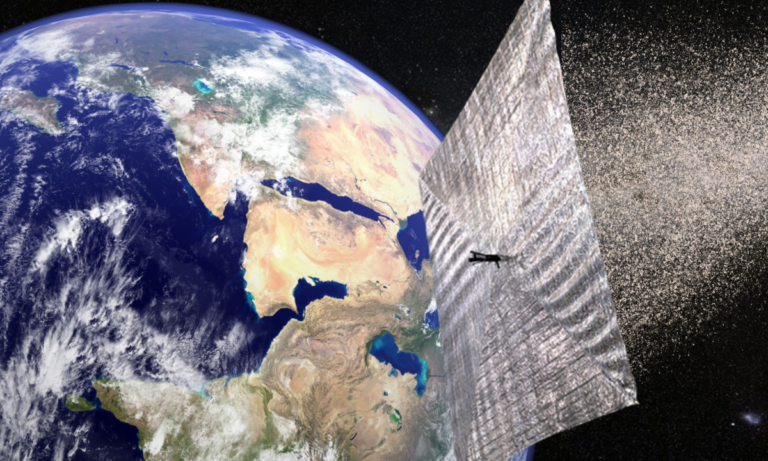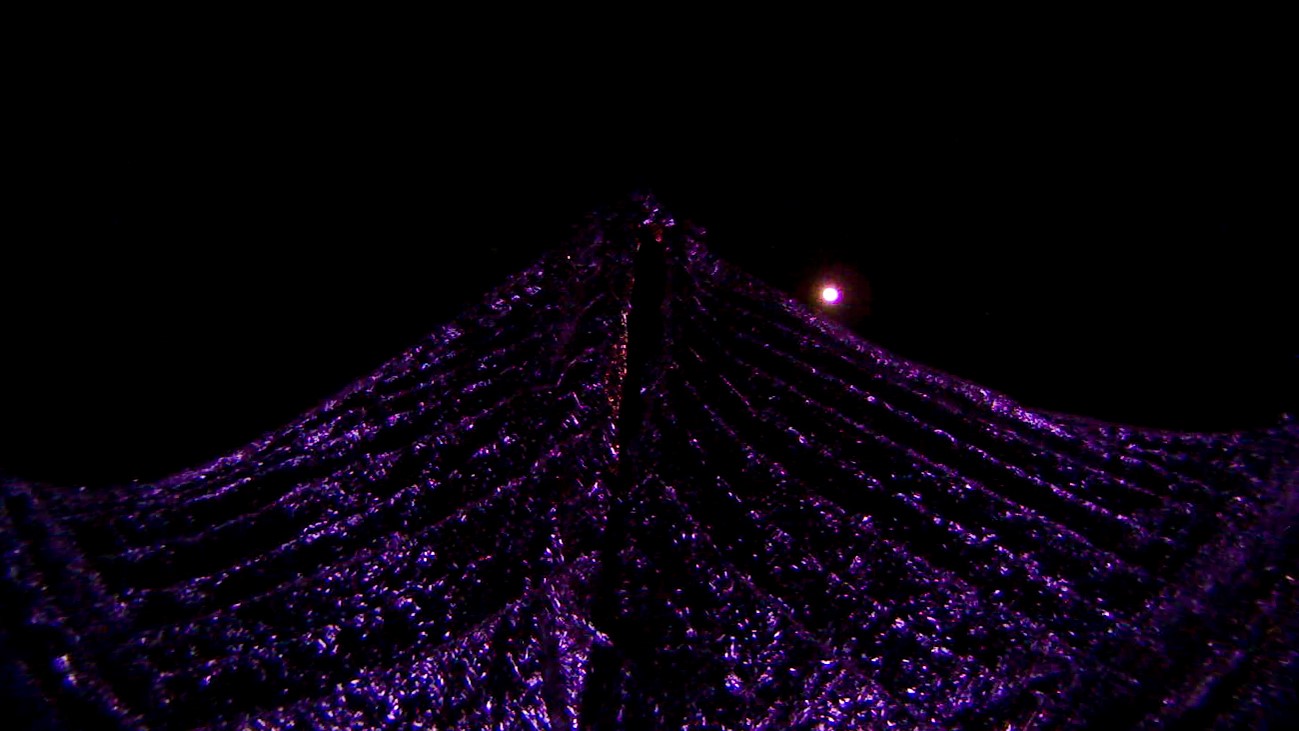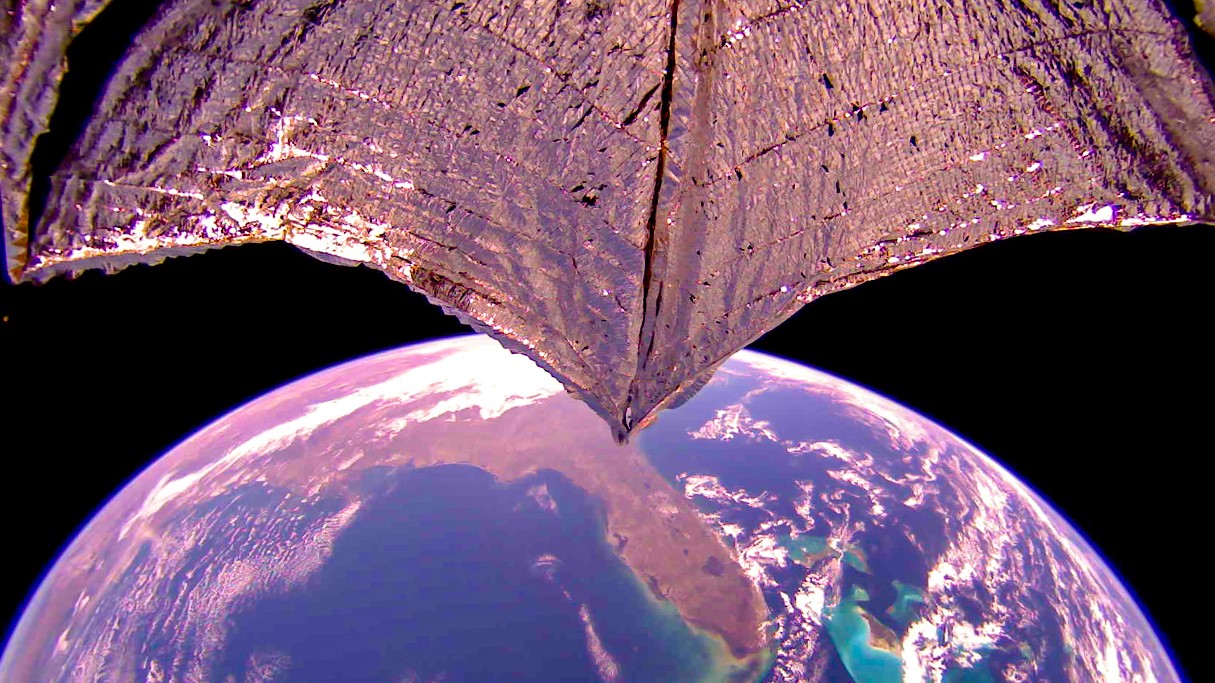
[ad_1]
The LightSail 2 spacecraft will ride on sunshine no more.
The Planetary Society’s crowdfunded solar sailing craft re-entered Earth’s atmosphere on Thursday morning (Nov.17) after nearly 3.5 years in orbit — more than three times longer than its designed mission life.
The LightSail 2 team has received no communications from the spacecraft since that date, leading them to conclude that the shoebox-sized craft had finally given up the ghost after completing 18,000 orbits and traveling about 5 million miles (8 million kilometers) around our planet.
“LightSail 2 is gone after more than three glorious years in the sky, blazing a trail of lift with light, and proving that we could defy gravity by tacking a sail in space,” science communicator Bill Nye, CEO of The Planetary Society, said in a statement (opens in new tab). “The mission was funded by tens of thousands of Planetary Society members, who want to advance space technology.”
Related: LightSail 2 captures stunning photos of Earth from space
LightSail 2 was the first small spacecraft to demonstrate controlled solar sailing, harnessing photons from the sun to adjust its orbit. (LightSail 2 wasn’t the first craft of any type to solar sail in space, however; Japan’s Ikaros probe did so in 2010.)
While light lacks mass, its individual particles — photons — carry momentum that can be transferred to a reflective surface to give it a tiny amount of push.
LightSail 2 has shown that solar sailing is an effective and viable propulsion method for small spacecraft, including tiny satellites known as cubesats, team members said.
LightSail Program Manager and Chief Scientist Bruce Betts wrote in a Planetary Society statement (opens in new tab) that deorbiting was always going to be LightSail 2’s fate, though the fiery end to the mission took longer to manifest than predicted.

The end of LightSail 2 was a drag
LightSail 2 launched in June 2019 aboard a SpaceX Falcon Heavy rocket, tasked with a one-year mission to demonstrated controlled solar sailing in orbit. It began its operations at an altitude of about 450 miles (720 kilometers) above Earth — slightly higher than the orbit of the International Space Station (ISS).
At this altitude, Earth’s atmosphere is still dense enough to exert a slight drag on a spacecraft, and it is this effect that eventually sealed the fate of LightSail 2.
Because of the large surface area of the craft’s solar sail, which measured 244 square feet (32 square meters) — about the size of a boxing ring — it experienced a larger drag effect than other spacecraft of its mass.
“Imagine throwing a rock compared to throwing a piece of paper. Atmospheric drag will stop the paper much faster than the rock. In our case, LightSail 2 is the paper,” Betts wrote. “A spacecraft like the ISS is huge but also massive, more like the rock. But even the ISS has to be boosted higher every few weeks using rockets to compensate for drag.”
During its third year of operations, in which it demonstrated its most efficient solar sailing, LightSail 2 experienced increased atmospheric drag due to a boost in solar activity. This activity from the sun heated the atmosphere, making the area LightSail 2 passed through denser.
“That marked the beginning of the end,” Betts wrote. “As solar activity increased even more, solar sailing was unable to compete with the increased drag due to atmospheric density increase.”

Over the last several weeks, LightSail 2 had been dropping deeper and deeper into Earth’s atmosphere, experiencing more and more drag, which, in turn, dramatically increased the rate of its drop.
“The spacecraft was caught in an ever-increasing snowball effect: as the spacecraft got lower, the density increased, which caused the spacecraft to get lower even more quickly,” Betts wrote.
While LightSail 2’s mission may be over, there is still scientific work to be conducted. The team behind the mission is continuing to analyze data collected by the craft, which remained operational until its final moments.
This data will also be shared with future space missions that also make use of solar sails, such as NASA’s NEA Scout, which launched on the agency’s Artemis 1 mission on Nov. 16 and will hitch a ride on sunlight to travel to the moon and then on to a near-Earth asteroid.
“Despite the sadness at seeing it go, all those who worked on this project and the 50,000 individual donors who completely funded the LightSail program should reflect on this as a moment of pride,” Betts wrote.
Follow us on Twitter @Spacedotcom (opens in new tab) or on Facebook (opens in new tab).
[ad_2]